Did you know that you can bake fabulous bread and desserts with quinoa? Here is everything you need to know about baking with quinoa.
Quinoa flour is absolutely amazing, though many people have been slow to realize just what a valuable addition it is to your kitchen. Its high protein content makes it especially valuable for gluten free breads, as the protein helps with the structure and rise.
Why the widespread quinoa flour reluctance? Well quite simply, quinoa flour straight from the box has an odor that is off - putting to many people.
Yes, I know I’ve been criticized in the past for saying this. (What with me being an advocate for quinoa and all!)
But if you are going to trust me to help you pick recipes for your family, I’m guessing you also expect a little honesty. So no sugar coating here – I absolutely hate the way quinoa flour smells straight from the package.
For a long time I stayed away from it all together. Then I ran across the work of Linsey Herman, a food scientist who writes at Cake and Commerce. She discovered that by toasting quinoa flour you can eliminate the strong grassy odor and bring out its rich nutty flavor.
How to Toast Quinoa Flour
- Preheat your oven to 220 degrees.
- Line 2 rimmed baking sheets with parchment paper.
- Divide a one pound bag or box of quinoa flour among the baking sheets. You want to spread it out so that it is no more than ½ inch thick.
- Place the baking sheets in the oven and cook for 2 ½ hours rotating the baking sheets half way through and stirring the flour to prevent burning.
- Remove from oven and cool. Store in the refrigerator or freezer for best results.
Of course, you can skip toasting all together.
I just don’t recommend you do so when you are trying to impress your Mother-in-Law with your culinary skills for the first time in the event that she is one of those people who dislikes the smell of quinoa flour.
While we are talking about impressing people, I do have another word of caution for you:
Don’t try substituting 100% of the flour in a given recipe with quinoa flour!
You will most likely be disappointed with the results. (The exception to this is in a non-baking dish where the flour is being used simply for binding.) Like other gluten free flours, quinoa flour is best when mixed. Generally speaking, I use no more than 40% - 50% quinoa flour in a recipe and I combine it with both starches and either xanthan gum or guar gum.
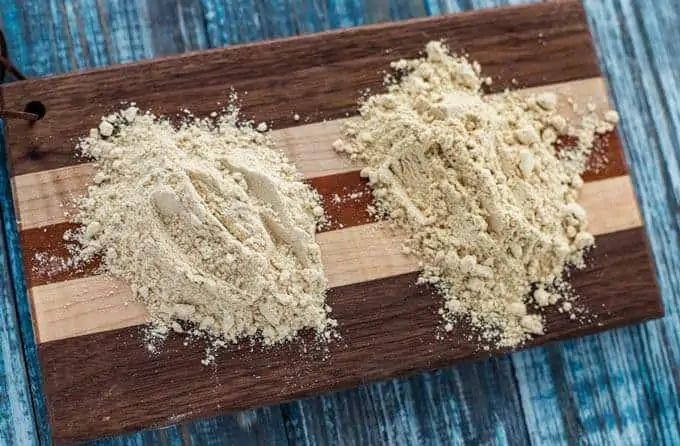
Baking Gluten Free
The science behind gluten free baking is fascinating to me and I love playing with new flours. I’m guessing most of you aren’t kitchen geeks like I am and would appreciate a little simplicity. To make things easier I’ve come up with a gluten free quinoa flour blend and I’ve tried to use it in as many of these recipes as possible.
Why so many flours?
Just about everyone who is new to gluten free baking gets more than a little frustrated with just how many different flours it takes to get the job done.
I know. It’s frustrating.
Unfortunately, trying to cut corners will just yield disappointing results.
Although you can buy packaged flour blends, I encourage you to make your own. Not only is it much cheaper but most prepared flour blends rely on brown rice flour as a staple ingredient. Although it may be fine in small quantities, because of the recent arsenic scare with rice, I prefer to stay away from it in my most recent recipes.
Here are two blends that I use:
Gluten Free All Purpose Quinoa Flour Blend
1 ½ cups sorghum flour
1 ½ cups toasted quinoa flour
1 ½ cups corn or potato starch
1 ½ cups tapioca starch/flour
2 ¾ teaspoons xanthan gum
Mix all ingredients in a large container and store in the refrigerator.
Gluten Free Quinoa Cake Flour Blend
1 cup sorghum flour
1 cup toasted quinoa flour
¾ cup cornstarch
1 ½ teaspoons guar gum (or xanthan gum)
¾ teaspoon sea salt
Mix all ingredients in a large container and store in the refrigerator.
Making Quinoa Flour
Although quinoa flour is readily available at most larger grocery stores, natural food stores and online, many people prefer to make their own quinoa flour.
Step 1: Rinse
The first thing you will want to do is rinse the quinoa. As tempting as it can be to skip this step, I don’t advise it!
Step 2: Toast
Once your quinoa is rinsed, place it on a parchment lined rimmed baking sheet. Preheat your oven to 220 degrees and toast the quinoa for 2 ½ hours, stirring once to avoid burning.
Step 3: Grind & Sift
Once your quinoa has been toasted, place it in a grain mill, blender or coffee grinder. (Note: Very small coffee grinders or inexpensive blenders may not grind it fine enough.) Process the quinoa until fine and then place the flour in a fine metal strainer to sift out any seed fragments that remain. Store in an airtight container, preferably in the refrigerator or freezer.


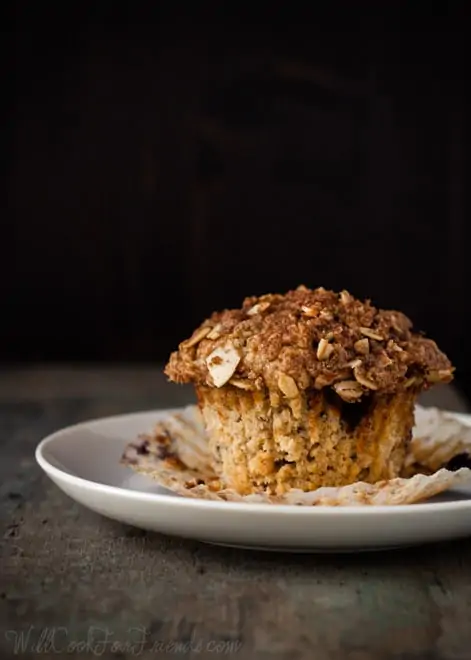
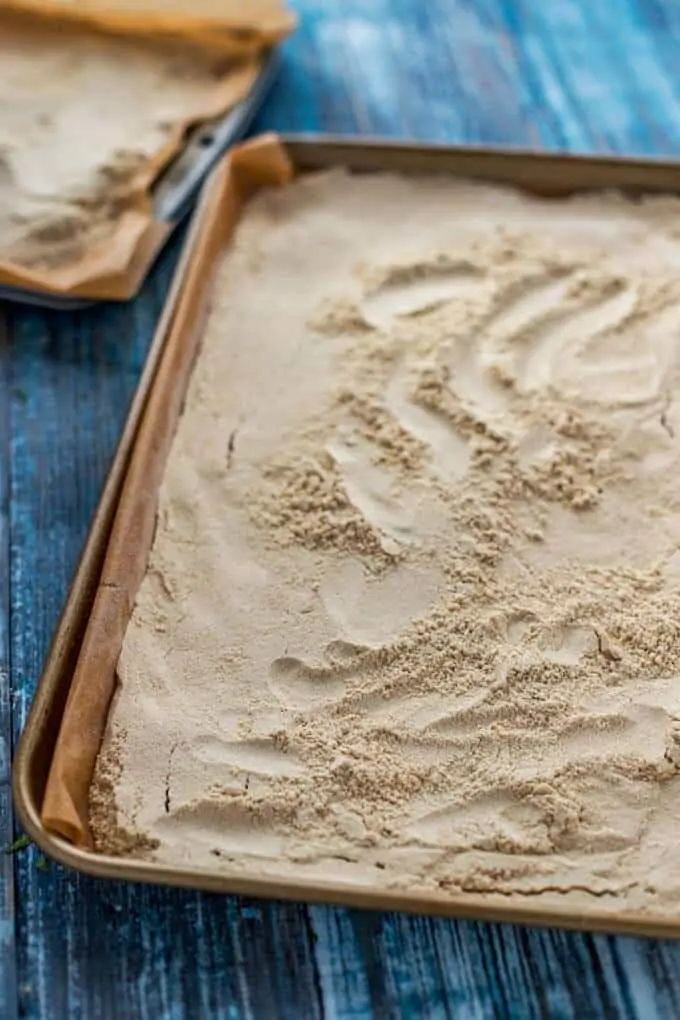
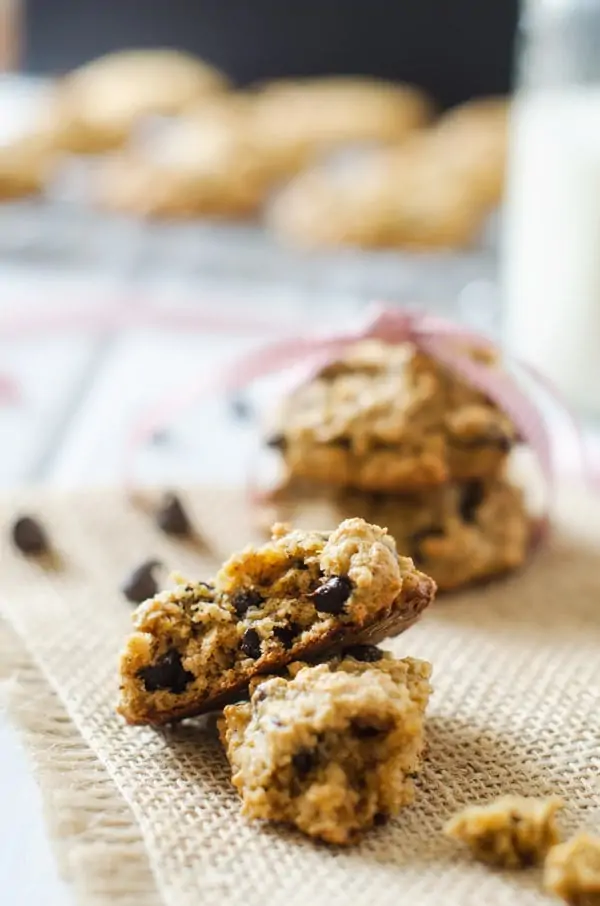
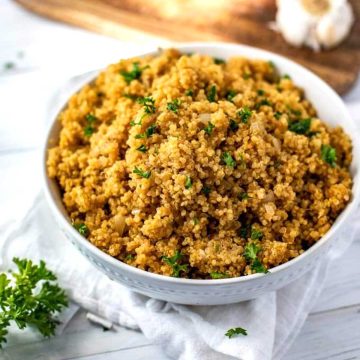
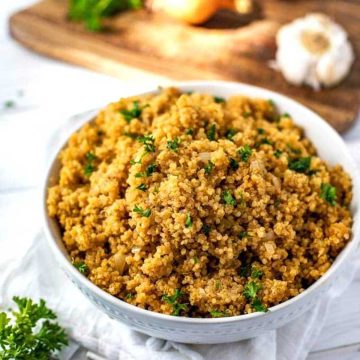
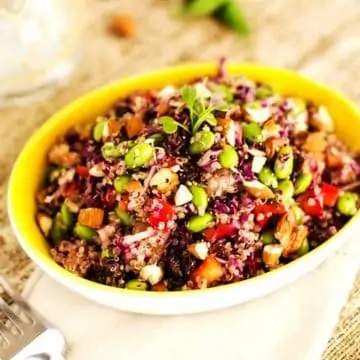
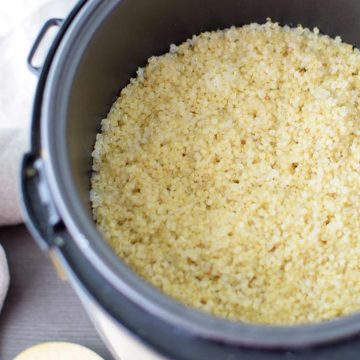
Ruby
I admire you speaking the truth about the strong smell of quinoa flour and roasting makes it better. I just roasted mine the first time in a skillet but I will try your method next time. Thank you so much.
Wendy Polisi
Thanks so much! Let me know how it goes.